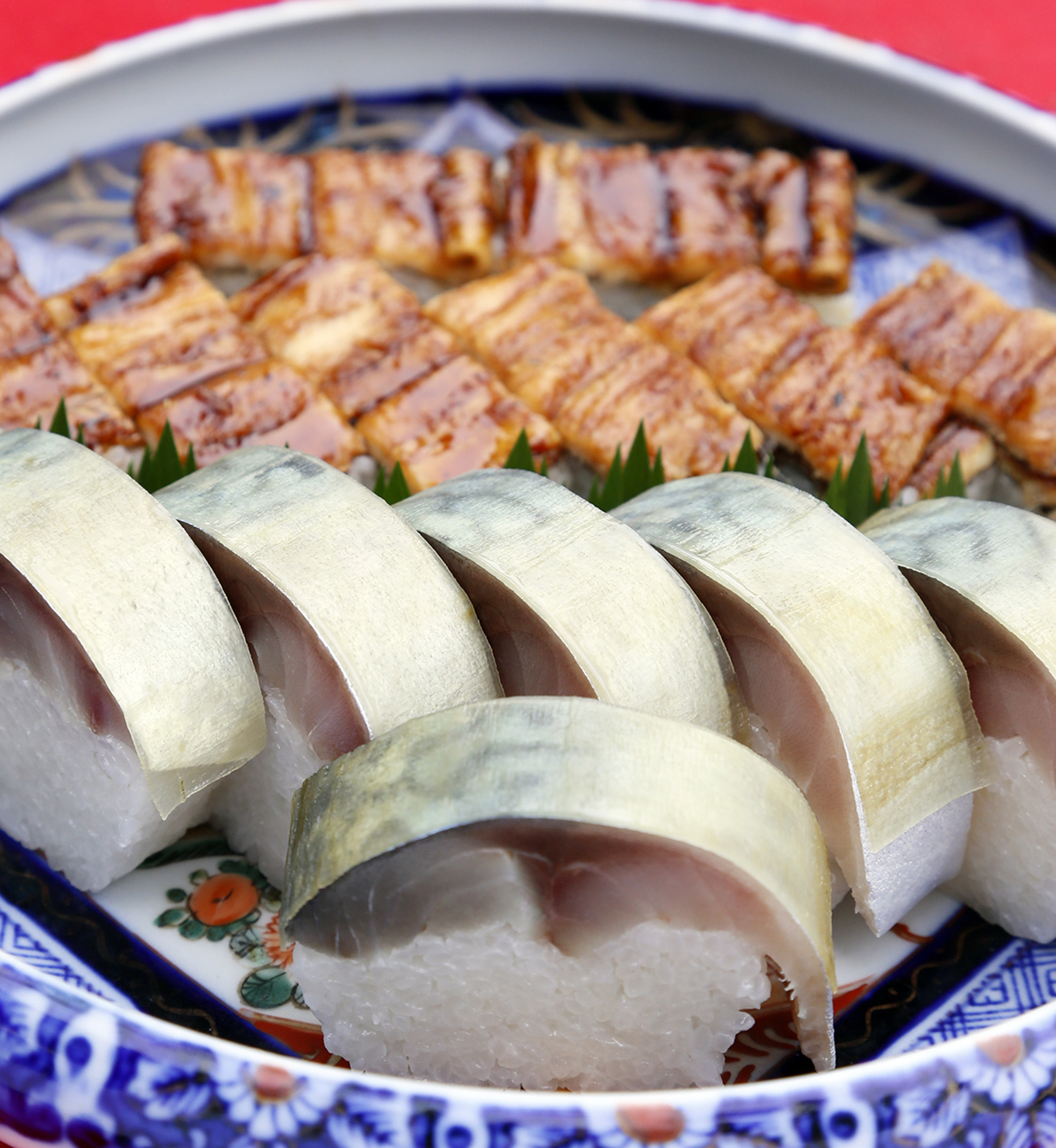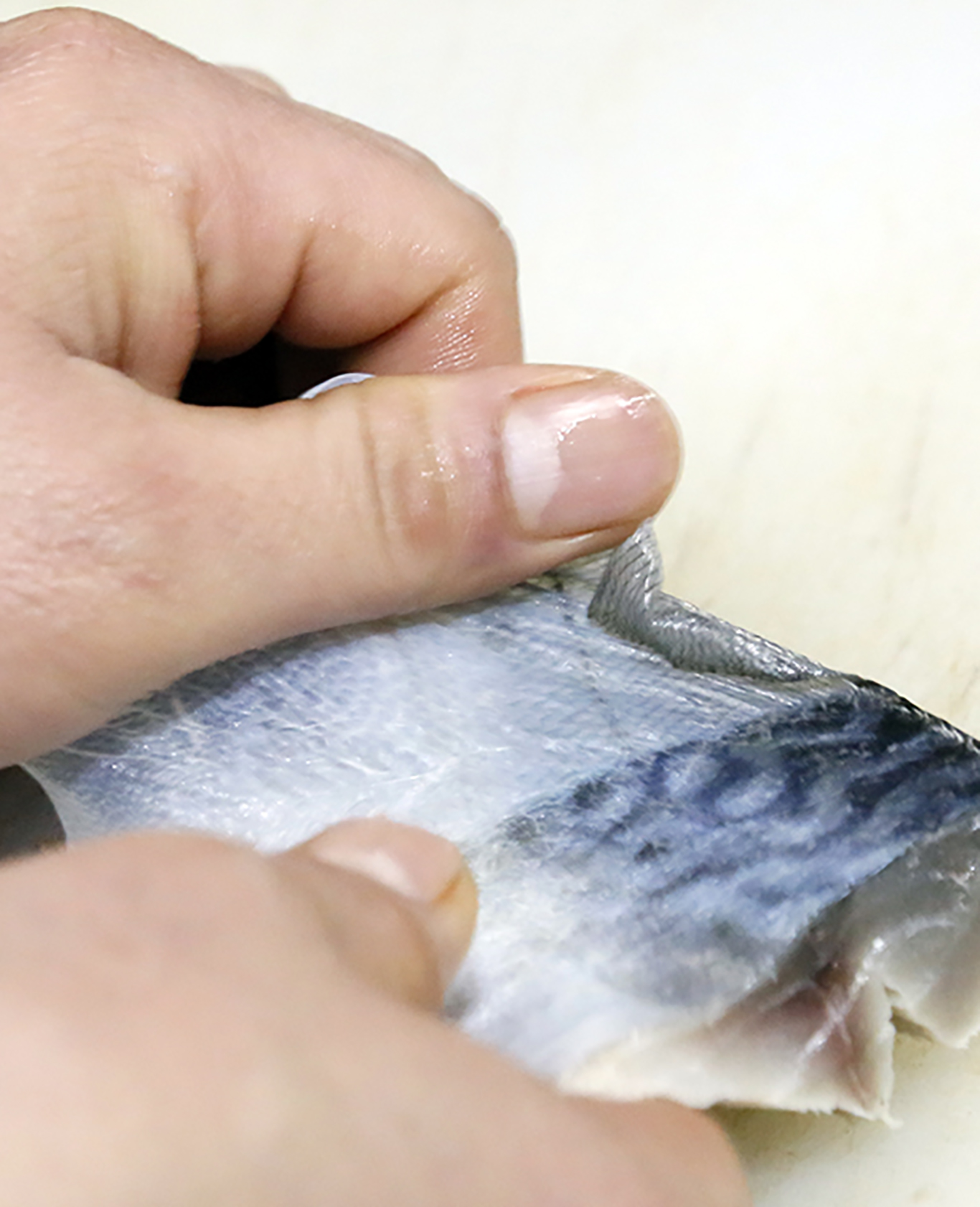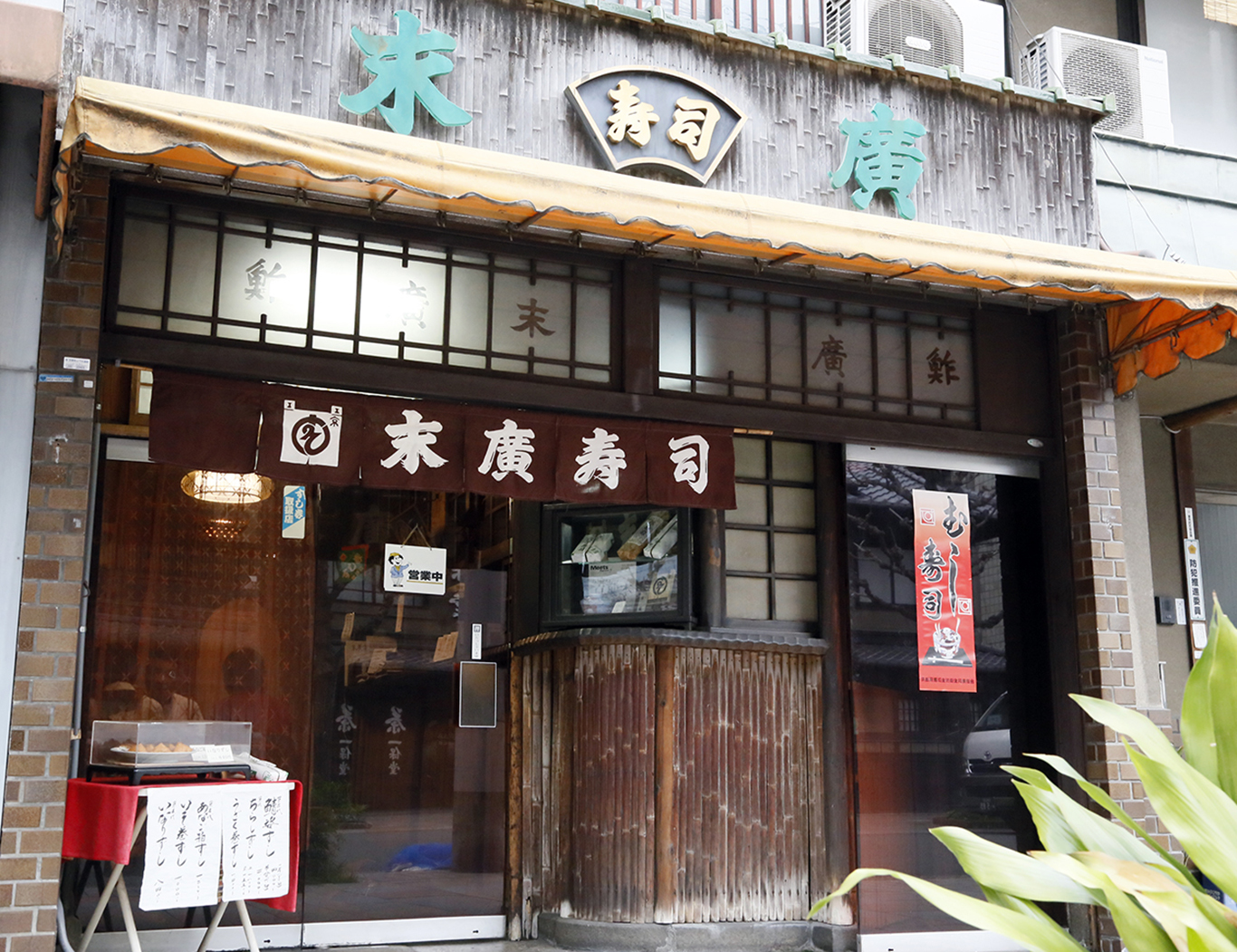SUEHIRO

A famous long-running Kyoto style Sushi restaurant established in the Edo Era
“It feels good to see the perfectly cut ends of the sushi.”

Looks delicious, taste delicious
If you express Edo style as eating at a counter seat, Kyoto style sushi is for eating in a tatami room. In the old days when it was hard to obtain fresh raw fish, people had “Saba-zushi” made from salted mackerel and vinegared rice. This is still a must have for celebration scenes at Kyoto.
This restaurant – Suehiro – was established in the Tenpo Era (1830-1844). The current owner Tokio Shibata is the 9th generation.
A medium rare Saba-zushi – fatty meat melts in your mouth
The old stone paved kitchen is well cleaned and maintained. “I heard it was built in the Meiji Era. We have been cooking in the same kitchen since before war,” he speaks as he neatly rounds the vinegared rice into an oval shape.

“It’s difficult to peel off the skin from unfresh Mackerel.”
The beautiful silver blue pattern appears from underneath the fresh mackerel skin. First removing small bones one by one, then carefully cuts the meat into small triangles, and finally rounds it up together with the vinegared rice. It is an amazing work.
A transparent Shiroita Kombu (seaweed) is placed on top of the mackerel to finish with.
“The seaweed keeps the sushi from drying out. ‘Izuu’ (another famous Saba-zushi restaurant) offers the type of Saba-zushi where you remove the seaweed before eating, but you can eat it together at my place. There actually are many types of Saba-zushis.”
The biggest characteristic of Suehiro’s Saba-zushi is the medium rare fish meat. The pickled surface makes the inside fatty meat stand out. The balance of vinegared rice, seaweed, and mackerel is perfect. The taste stability shows the long history behind it.
“The best timing to eat is after you let it rest for about half a day.”

Professional’s cooperation is necessary for a brand to continue
The most popular menu for the Hako-zushi is Anago (Eel). A Hako-zushi is made and shaped using a wooden box – the first layer on the bottom is broiled eel, next a seaweed, and then vinegared rice on top.
Once this is well pushed and shaped, the boxed sushi is flipped and pushed out of the box to be cut by a special curved knife. The square cut sushi are rearranged as if they were Mahjong tiles, to be served.
“It has already been 25 years, but still the cutting part is difficult. It feels good when I succeed to see the perfectly cut ends.”
Once the sushi is neatly decorated onto a beautifully painted plate, you could easily imagine the plate being welcomed into the tatami room with a cheer. This moment shows the true worth of Kyoto style sushi.
“If Kyoto style sushi doesn’t look delicious, it won’t taste delicious either.”
Speaking of sushi, labeling the fish origin is popular nowadays. Tokio understands the trend, but he decided not to do this for his food.
“Our fishmonger selects the best ‘Suehiro taste’ mackerels every time regardless of the production area. This is the same with the rice shop. This is why I could maintain the same ‘Suehiro’ taste.”
Taste easily changes throughout the season if you stick with the production area, but because there are many professionals supporting Suehiro, the brand never changes. “Long history was not built in a day” – I think I found the reason why Suehiro’s Saba-zushi is loved beyond generations.


